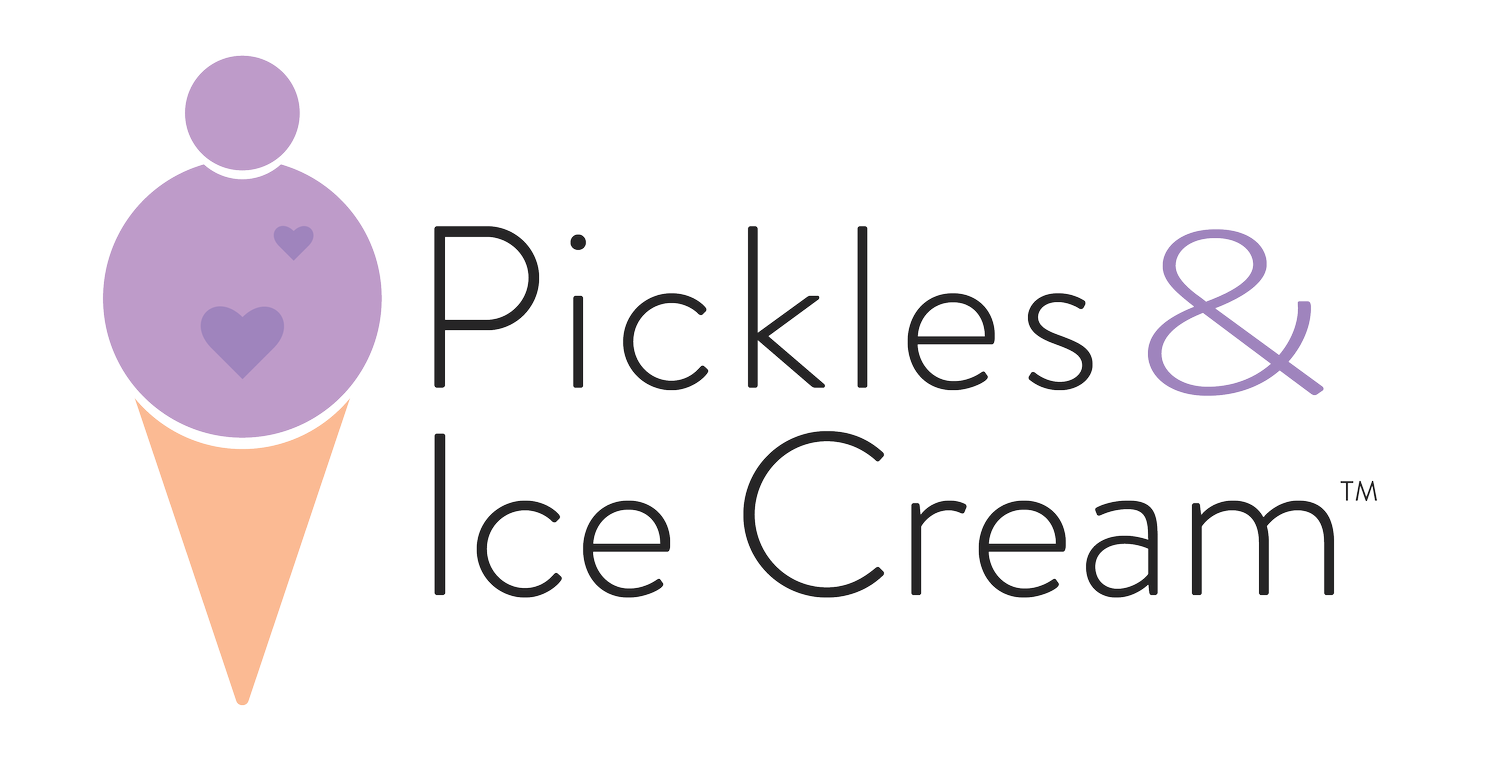Body Talk: Perineum & Pregnancy
➝ Your body that needs TLC during pregnancy always, and the perineum is no exception!
➝ The perineum is a small part of the body, but it plays a large role in the birthing process.
➝ You can prepare it for birth by massaging then help it recover in your postpartum.
Your perineum may be one part of your body that you haven’t thought much about, but it’s pretty important for childbirth, so now is a good time to learn! We get into every nook and cranny here at Pickles & Ice Cream Georgia®. So take a moment to whip out a hand-held mirror and get to know your perineum — or the skin and muscle located between the opening of the vagina and the anus.
Although small, your perineum is a strong part of your pelvic floor that allows you to walk upright and prevent leaking of urine when you cough or laugh. During birth, the perineum has the job of stretching down and out to allow the exit of your baby. However, this area is slightly less stretchy than your vagina and can tear while giving birth. The majority of women will have mild tearing during birth, but there are things you can do to prepare your perineum, help it stretch, and avoid damage during the birth process.3
Preparing Your Perineum
A perineal massage is a way to gently stretch and relax the skin and muscles of the perineum to prepare for birth.
Talk to your healthcare provider before trying a perineal massage routine. If they give you the OK, you can start perineal massage when you are about 34 weeks pregnant.6 You can massage yourself or you can have a partner lend a helping hand, whichever makes you feel more comfortable! Let’s go through the steps:
Wash your hands (or your partner’s) thoroughly and be sure nails are trimmed.
Find a comfy, relaxing position. You could try these positions:
Prop up pillows on a bed or sofa, so you or your partner can reach your perineum more easily.
Recline in a warm bath with one leg up on the side.
Stand in a warm shower with one leg up on a stool.
Sit on the toilet.
Apply a couple of drops of coconut oil, olive oil or any other lubricant designed for the vagina (just avoid synthetic lubricants like baby oil or Vaseline) to your fingers and perineum.
Insert your thumbs into your vagina up to about your first knuckle. If your partner is helping, ask them to use their index finger instead of their thumb for the massage. Here’s a visual if you need it!
Apply gentle pressure in your vagina downwards, toward your rectum.
Maintain the pressure as you move your thumbs from left to right in a U shape (from about 3 to 9 o’clock, if you imagine a watch).
You should feel a stretch and a bit of stinging or burning, but never pain.
Continue massaging for three to five minutes.
Repeat once or twice a week and up to once a day until delivery.
Perineal massage can also be used by your provider or support team during birth, along with warm compresses, to help relax the muscles and prevent tearing.
Care After Birth
If you had a vaginal delivery, or had a C-section but you spent time laboring, you may experience some perineum discomfort and swelling after birth. If you had a tear in your perineum and had to have stiches, you may be especially tender for a little while.
Some ways to ease perineum pain after birth include:
Sit on a pillow or padded “donut” ring.
Use an ice pack or a chilled witch hazel pad on your perineum.
Take a warm sitz bath (a bath where only your hips and butt are submerged) a few times a day or try hot compresses.
Use a squeeze bottle to pour warm water over the perineum after using the bathroom.
Take an over-the-counter pain reliever, like ibuprofen or acetaminophen.
Your perineum plays an important role during birth. Taking care of yourself and your perineum before and after birth can help towards a smooth recovery, allowing you to enjoy the time with your new bundle of joy!
References

